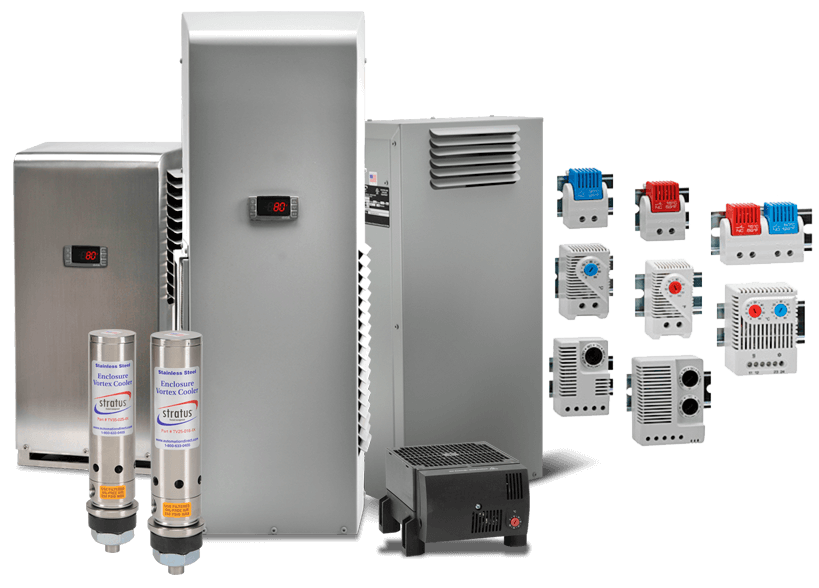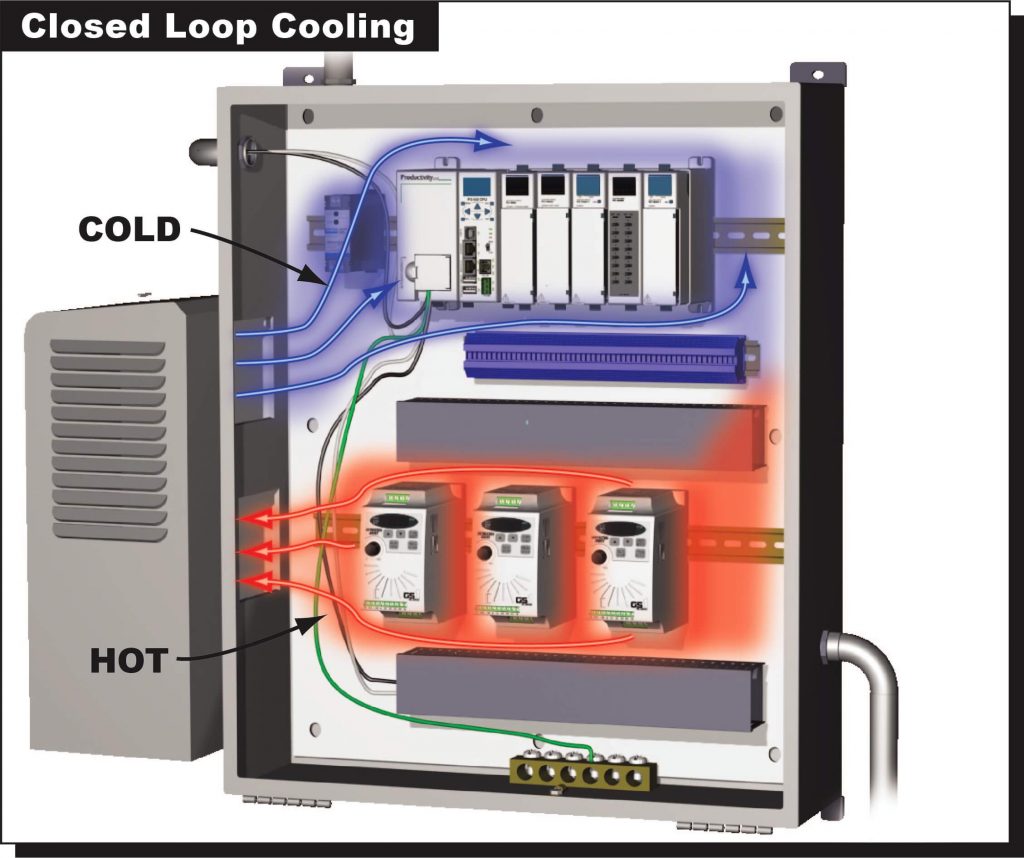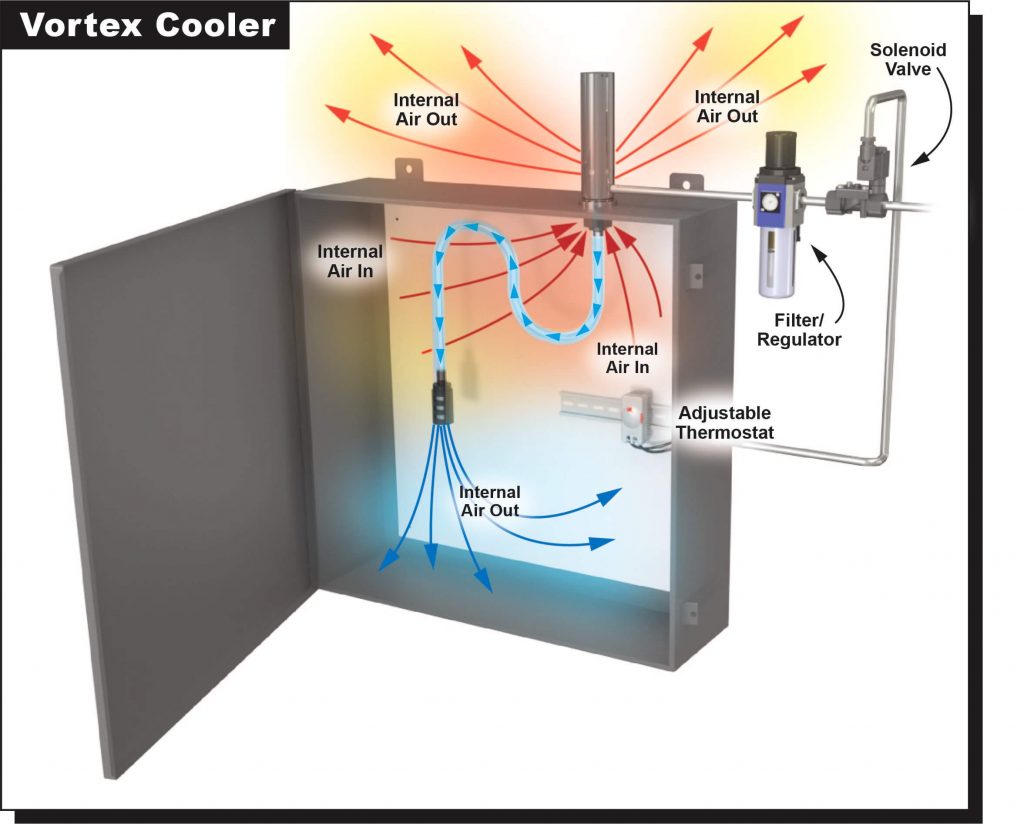There are a variety of solutions for heating, cooling, and dehumidifying electrical and control enclosure interiors to protect the components housed inside.
While some electrical and electronic devices can be used unprotected in the field, most are installed within enclosures to protect them from the elements. Designers need to provide these enclosures with the right environmental controls to maintain the interiors at the proper conditions.

Jim Krebs, Technical Marketing Engineer at AutomationDirect, wrote an article on this subject for the March 2022 issue of Tech Briefs titled Strategies to Solve Enclosure Thermal Management Challenges. Here’s a summary, click on the link above for the full text.
Heat, Cold, and Moisture
Protecting the interior of an enclosure from exterior extremes like water, dust, and ice is the primary goal, but controlling the temperature and humidity is just as important. Failure-inducing high temperatures generated internally by components, or externally by the sun, are a leading concern, but low temperatures can cause condensation leading to corrosion and arcing damage. Prudent design considers both heating and cooling to protect against both extremes.
Thermal Management Techniques
Thermal management in the form of heating/ventilation/air-conditioning (HVAC) is needed, but in many cases a full-blown system for each enclosure would be expensive, impractical, and energy-wasting. Basic heaters, air conditioners, fans, and associated thermostats sized for enclosures are the usual answer, but there are also more specialized options.
- Air conditioner
- Heater
- Circulating fan
- Thermostat
- Thermoelectric cooler
- Vortex cooler
- Heat exchanger
- Hygrostat and hygrotherm
Closed-loop systems are available to ensure that no extra contaminants or moisture are introduced to an enclosure, and options like vortex coolers are useful for harsh environments where compressed air is available.


Sizing and Selection
Designers must consider the enclosure contents, how much heat is generated, what temperatures are acceptable, outside conditions, and the available utilities when selecting thermal management devices. AutomationDirect is ready to help with sizing tools and support staff!
Design engineers … can take advantage of these resources to find the best technical and most cost-effective solutions for providing thermal management that protects electrical and electronics installed within enclosures from the effects of temperature and moisture.

